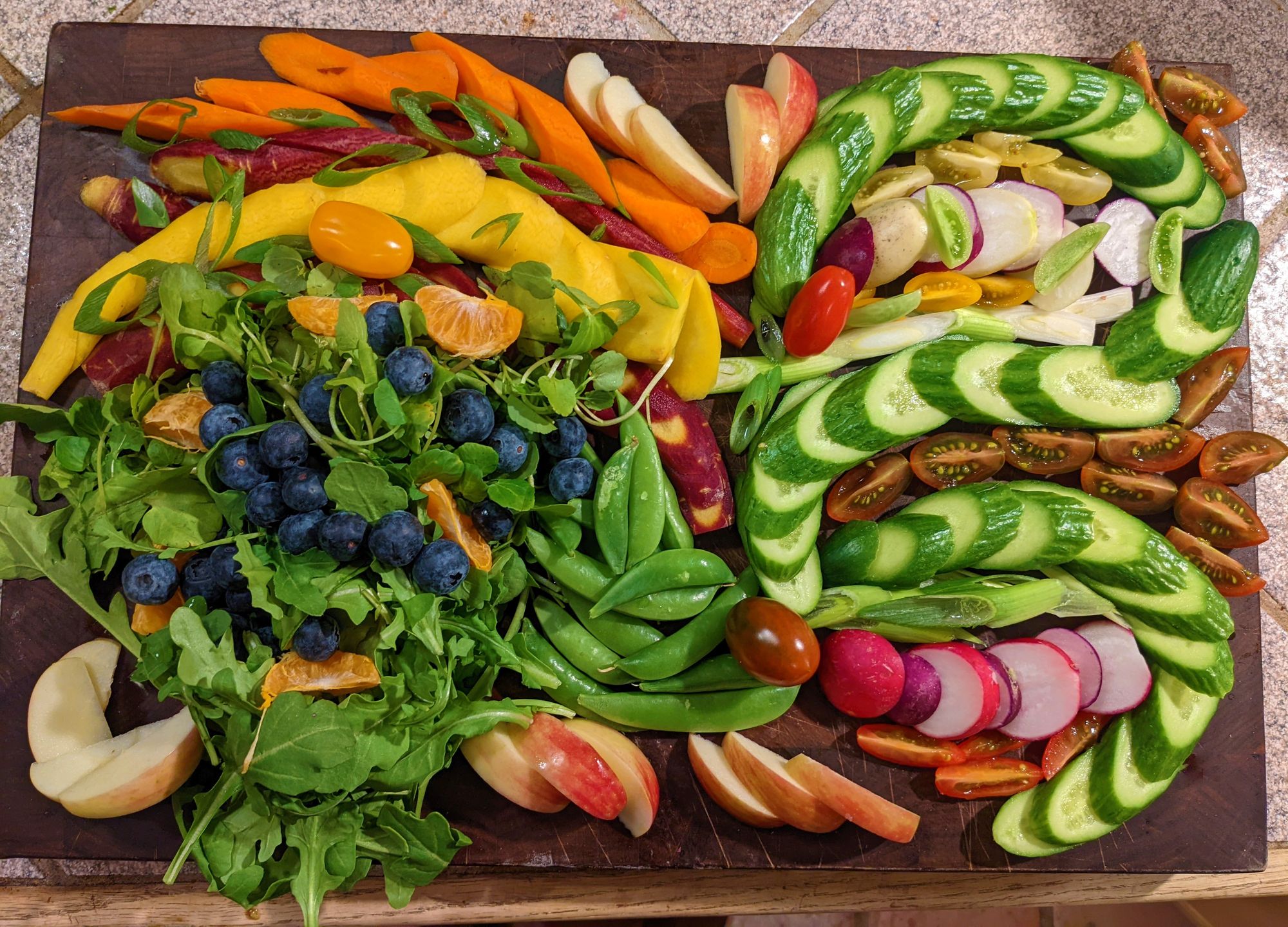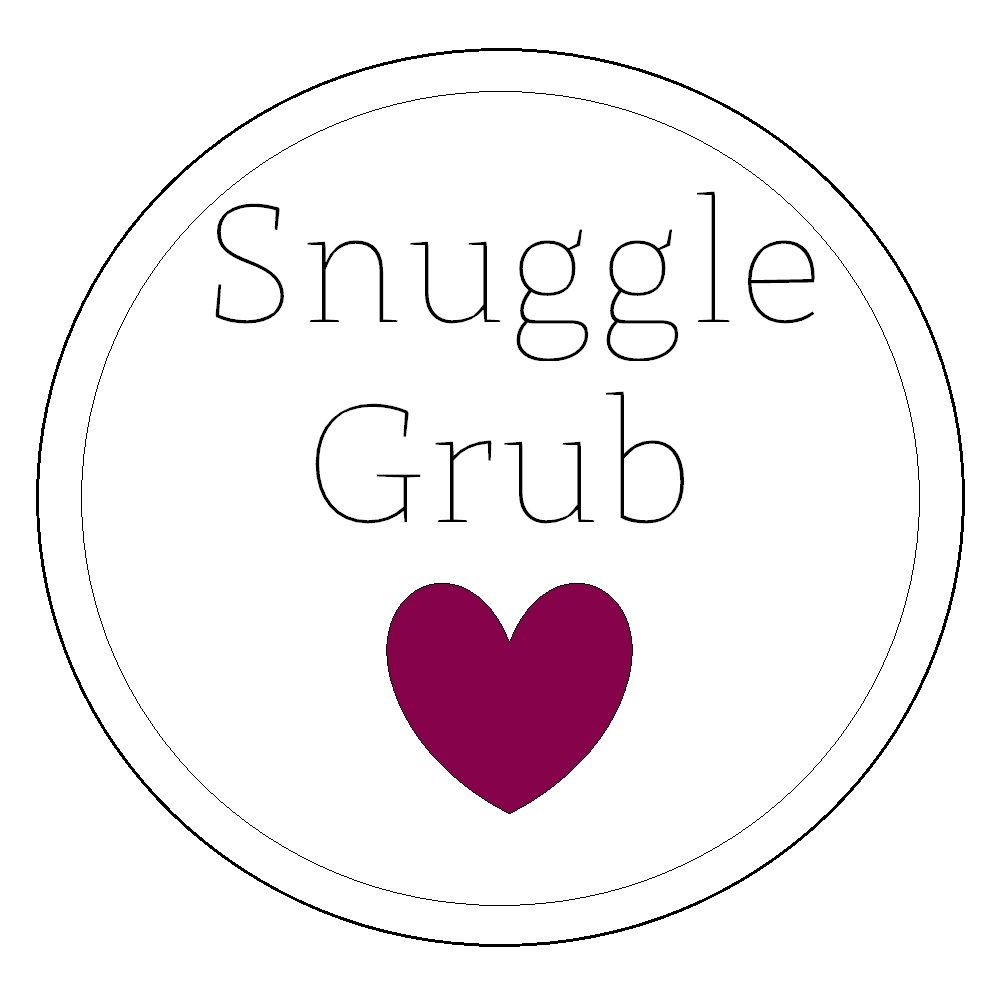Where do I start..?!
It's been a while since my last update and while I'm learning to take better food photos (read: tidying away clutter in the kitchen!), I thought January marks a good time to talk about some kitchen basics in 3 categories- Essential Kitchen Tools, Pantry Staples, and Perishables.

It's been a while since my last update and while I'm learning to take better food photos (read: tidying away clutter in the kitchen!), I thought January marks a good time to talk about some kitchen basics that might help anyone starting on their journey into cooking.
Below I've included 3 categories- Essential Kitchen Tools, Pantry Staples, and Perishables, in no particular order.
I hope this might be helpful to anyone looking for a few pointers, whether you're doing Veganuary, trying to spend more time cooking meals from scratch, or if you're just curious.
Essential Kitchen Tools
A couple of essential items I believe all kitchens should have in order to set you up for success:
1. A good knife
For years I swore by a little pairing knife, and a serrated bread knife. While I've been incredibly fortunate to have received wonderful knives since as gifts, I know that a good sharp knife that can be used for chopping up veggies of any size or shape will always be my go-to!
2. A wooden spoon
Many good quality pots and pans recommend not using metal spoons so as not to scratch the surface/ coating. Wooden spoons are a fantastic, versatile tool which can be used during baking, cooking, or even serving! I always have one handy. especially if I'm scraping the crunchy bits at the bottom of a pan!
3. A sturdy chopping board
When looking for a chopping board, try to pick one with end grain to prevent damage to your knives. End grain boards are also also very aesthetically pleasing, I often use mine as a crudité board, or serving tray. If you can't find one in your local shops, take a look at online small businesses eg Etsy sellers.
4. A SAFE mandolin
I've heard (and experienced) absolute horror stories from mandolin usage (think lots of sliced fingers!), and finally located a safe version- one where your fingers are nowhere near the blade! Mandolins make it easy to cut very thin slices of vegetables, or even to make quick chip or fry shapes. I recommend not only purchasing the safe version, but also looking for a model which allows you to change the thickness and shape of slices.
5. A vegetable peeler
Vegetable peelers can be used for so much more than peeling the skin off your spuds! I use mine most for creating faux salmon or beef strips from carrot or winter radish. Make sure your peeler is sharp, and be careful not to peel your fingers- slice proof gloves are a great idea!
6. A micro planer
This inexpensive kitchen gadget is perfect for grating citrus fruit zest, fresh ginger, lemongrass, and garlic. It's pretty sharp, so make sure you keep the plastic cover handy!
7. A heavy bottomed saucepan
I tend not to use oil in cooking, and my eyes are typically much bigger than my stomach- this results in a very messy kitchen especially when I use shallow frying pans (I get a little overzealous, so vegetables fly everywhere!). I sear by my induction cooker ready staples- cast iron or steel bottomed pans, with or without enamel coating. These will last generations when taken care of- a great investment!
8. A blender or food processor
I spent many years overfilling a tiny refurbished Nutribullet until it finally gave out on me and I invested in a Vitamix. Although I would highly recommend the blender I bought, if I'm honest, most blenders would do the job without issue! My recommendation- buy one that fits your budget, and suits your needs.
9. A rice cooker
I was very late to the game on this one, having finally purchased a 1-4 person rice cooker last year, but my goodness am I glad I made the investment! many rice cookers allow you to schedule your rice to cook by a certain time, and will keep the rice warm for hours afterwards- perfect for a quick lunch, especially if you're pulled into an impromptu meeting at the last moment!
Rice cookers also cook other grains such as buckwheat, quinoa, or even oats for your morning porridge or oatmeal, and some even double up as cake makers!
Pantry Staples
What do I always have stocked up in the pantry? These all have along shelf life, and are pretty cheap!
- Pasta
I always keep a couple of boxes of pasta and sauce in for a quick, easy meal. I highly recommend stocking up on lentil or chickpea based pastas which are gluten free, and high in protein and fiber. Brown rice noodles are another fantastic quick-cook staple which are also gluten free and lend themselves really well to Asian inspired dishes such as stir-fry, nutty noodles, or pho. - Rice
As I mentioned above, I highly recommend purchasing a rice cooker to help take some of the toil from cooking lunch or dinner, especially on a busy day. Did you know there are multiple types of rice one can use? For example my go-to for lunch is Gaba rice- a sprouted grain which has been proven to assist in the treatment of anxiety disorders and boost the immune system. Of course, you can always pre-cook short grain rice and create your own sushi too! - Lentils
I keep bags of both dried puy (green) and red lentils ready to use- they are inexpensive, cook pretty quickly, and can be used in anything from Shepherd's Pie, to lasagna, stews, soups, or even a pancake mixture. They can be used in almost any cuisine- French, Mexican, Indian, British.. did you know you can even make your own tofu out of lentils?
In addition to dried, I always keep 1 or 2 cans of lentils handy in case I need to whip up a really quick meal as they take just minutes to heat through and serve. - Herbs and Spices
- Flaked salt
Flaked salt adds texture as well as flavor, I recommend a pinch of Maldon or Saltverk, most have wonderful flavors to try out, smoked salt in particular adds real depth to a dish.
- Garlic salt
This is a great quick, flavorful seasoning which negates the need to buy garlic AND salt. Some brands have a great mix of alliums to give a wonderful onion kick.
- Black pepper
Grab the peppercorns to mill fresh if you can, a little goes a long way.
- Smoked paprika
A staple for any Spanish style dishes, this gorgeous earthy flavor brings a beautiful orangey red color to the meal.
- Onion and Garlic powders
A staple for many savory dishes, allowing a wonderful flavor to be distributed throughout without the need for fresh garlic or onion to be added to the dish.
- Cumin seeds
These can be toasted and ground for a wonderful base for Mexican or Indian style dishes. Keep whole for chilis, rice, and to add into breads such as naan.
- Dried leafy herbs- oregano, parsley, and thyme
These three are my base go-to herbs. They bring color, flavor, and depth to a multitude of dishes.
- Cinnamon (ceylon)
Cinnamon is great for sweet baked goods, as well as savory Mexican, and Indian dishes. Make sure to grab ceylon cinnamon rather than cassia cinnamon, which has higher levels of coumarin, a natural blood thinner. - Nutritional Yeast
This one is particularly important for vegans- nutritional yeast, or 'nooch' is high in protein, fiber, and most importantly, vitamin B12. Its fabulous cheesy flavor lends itself really well to sauces, soups, pizzas, and more. It can be used alone as seasoning sprinkled upon your favorite savory dish like these potato wedges. These days, nooch is available in many different flavors too including garlic and herb, dill pickle, nacho spice, and salt and vinegar. - Beans
I always keep beans- both dried and tinned because they're so inexpensive, versatile, and a great way to add protein, fiber, and a little bulk to any meal. did you know, for example, black beans bring a delicious fudge flavor to chocolate brownies, and a can of chickpeas takes a matter of moments in a blender to turn into hummus? Better still, the water from the can of chickpeas, known as aquafaba, can be whipped up into a vegan meringue! - Tomato Sauce/ Passata
A great staple to whip up a quick bowl of pasta, or a base for stews, soups, and layer bakes. Not to mention, this is my go-to pizza topping. Add what you fancy, and season to taste! - Flour
-Wheat
I recommend trying to locate an organic mill which produces 100% extraction so you get the most out of your grain. Wheat flour is my go-to for bread or pizza dough, remember to store it in the freezer to keep it fresh longer.
-Chickpea
Gluten free, and high in protein and fiber, chickpea flour can be used in baked goods like this moist chocolate cake, or mixed with water to make a pizza or savory pancake base called 'socca'. It's a great substitute for eggs in frittata or a Spanish omelet too!
- Oat
Oat flour is another great gluten free, fiber rich staple. It can be used as a thickener in savory sauces, or as a base for baked goods such as cookies/ biscuits. - Miso
This has a really long shelf life but does need to be kept in the fridge. This gorgeous earthy umami paste is perfect for soups, stir fries, sandwiches, desserts, sauces.. almost anything! Read more about this fabulous ingredient here. Remember, a little goes a long way!
Perishables
What do I recommend grabbing on your weekly or biweekly shop? You'll always find the following in my fridge or vegetable basket:
- Onions
I always have spring onions (scallions), and red or sweet onions, or shallots in stock. While spring onions store best in the fridge, bulb onions or shallots weather best in a cool dark place- I use a wooden vegetable box in the kitchen. Whether the star of the dish like this vegetarian take of the classic French onion soup, or added as a flavor in curries, stir fries, pizzas, or soups, these pearls of flavor are something I use every day. - Potatoes
If you can get your hands on them, purple potatoes, specifically purple sweet potatoes are the best for you, and most flavourful! Potatoes are so versatile- baked, mashed, roasted, boiled, fried, or even blended into a sauce. Keep the skins wherever possible for an extra boost of fiber. - Peppers
Peppers are another wonderfully versatile veggie- they can be added raw to salads, stir fries, curries, pasta sauces, pizza, or halved and stuffed as a hearty meal. - Leafy greens
I try to grab dark leafy greens such as kale as these are highest in antioxidants, and can be eaten raw, or added to a variety of cooked dishes. - Tomatoes and mini cucumbers
These are my go-to salad additions, they make a fabulous side to any cooked meal, and can even be used as crudités to dip into hummus. - Mung Beans, Snow peas (mangetout), or Sugar Snap Peas
These help bulk out stir fries, adding fiber and antioxidants without making the dish too heavy, like in my vegan Pad Thai recipe. - Tofu or tempeh
Both tofu and tempeh are high in protein and have a longer shelf life, typically a few months, but most do need to be kept in the fridge. You can make your own tofu from any pulses, but I like to keep some in the fridge to help with quick meals. Tofu also makes a fabulous velvety base for sauces, it's my go-to for vegan mac and cheese, and can be scrambled like eggs for a filling breakfast. Tempeh is harder to make yourself as it requires you to ferment the beans. It can be baked, or fried and used as a substitute to bacon or chicken in most recipes for example in my take on a British Carbonara.
Hope this is helpful for anyone just getting started in the kitchen, or those of you looking to cook more of your own meals.
Let me know your recommendations, thoughts, and findings, and good luck on your culinary journey!

